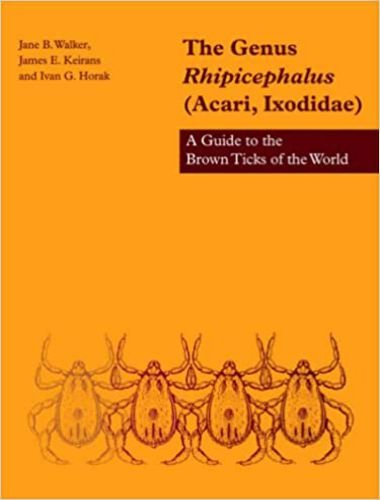The Genus Rhipicephalus A Guide to the Brown Ticks of the World
by

This comprehensive guide proves to be an excellent reference for anyone interested in the brown tick…this is a well-organized and carefully prepared and edited reference book. It successfully provides a great deal of information in a most scientific, yet reader-friendly format.
This authoritative and beautiful book is the best beginning we could wish for acarology’s third century. No one who visits its pages will fail to find instruction or inspiration.
This handsome, rather massive book, with large clear type in double columns and large format is well bound, nearly error-free, and reasonably priced for its size and content. It is recommended as an essential reference tool for workers worldwide who may have any of a variety of interest in Rhipicephalus ticks–all the more so in this era that is exposed to problems of globalization more than ever before.
The authors are well qualified to produce such a monograph. The research is exhaustive; all of the major collections of Africa, Europe, and North America lent specimens for study. The wording is precise, and the book is carefully edited. The illustrations and maps are sharp and detailed. It is highly recommended for libraries whose patrons have an interest in ticks…Medical libraries and academic libraries with emphases on agriculture, tropical medicine, veterinary science, or arthropod studies will absolutely need this book. It is a book that will surely get under your skin. Zoology: Inside the Secret World of Animals
Ticks in the genus Rhipicephalus include many important vectors of animal and human pathogens, but many species are notoriously difficult to identify, particularly at immature stages. This reference provides identification keys for adult ticks from the Afrotropical regions and elsewhere. For the nymphs and larvae, unique plates have been compiled in which line drawings of the capitula of similar species are grouped together to facilitate identification. The authors give brief, well-illustrated descriptions of the known stages of every species, plus information on their hosts, distribution, and disease relationships. The book also includes tables providing data on host/parasite relationships and disease transmission, making this the definitive reference source on this group for all those interested in acarology, veterinary or medical parasitology, and entomology.
Direct Link For Paid Membership: –
